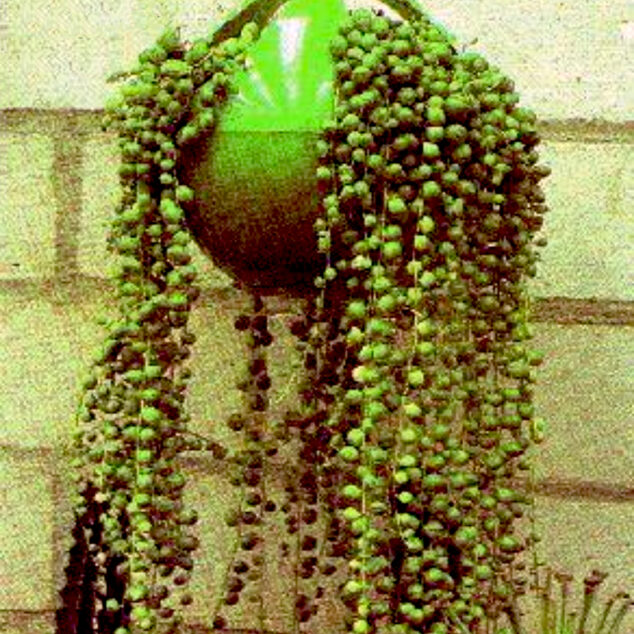By Marina Welham
![]()
Senecio Rowleyanus. Family: Asteraceae (Compositae). Common Names: String-of-beads or String-of-pearls
SENECIO ROWLEYANUS
Senecio rowleyanus has small spherical leaves about 1/4 inch in diameter. These are strung on thin stems like beads of a necklace. The stems also carry adventitious roots which grow down into the soil as the stems lengthen, so that eventually the plant becomes a dense mat on top of the soil as well as the lengthening stems hanging over the edge of the pot as they grow longer.
I have owned a variegated species of this plant with pretty green beads touched with spots of yellow.
S. rowleyanus is from South Africa. Small flowers are white and smell like cinnamon.
Other succulent species of senecios come from the Canary Islands, northern and southern Africa, Madagascar, the Indian subcontinent and Mexico.
Care
Light
Senecios must have bright light, including two to three hours a day of direct sunlight through the year.
Soil and Potting
This plant should be grown in a well draining sandy mix and re-potted into fresh soil every 18 months or so. Because younger plants are more attractive than older ones, take cuttings every year and begin new plants, so that when the older plant seems to have run its course for attractiveness, you have a fresh new plant or plants to carry on.
Temperature
Normal room temperatures are suitable during the active growth period in spring and summer. In winter, they need a rest period with cooler conditions (50-55F) . Minimum tolerable temperature is 45F.
Watering
Water well in spring and summer allowing the plant to almost dry out before thoroughly watering again. In late fall and winter water only enough to keep the mix from drying out completely.
Feeding
Feed every two weeks or so in spring and summer with a liquid fertilizer diluted to quarter strength.
Propagation
Stand the pot in a bright filtered light, water just enough to keep the mix from drying out completely, and roots should form within a few weeks. Repot into the potting mix for mature plants.
Pests
Keep an eye out for mealy bugs which love these soft bodied plants. Another pest which tends to collect on the growing tips of these succulents is aphids.
Rescued from The Wayback Machine.
![]()

